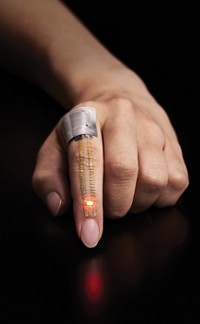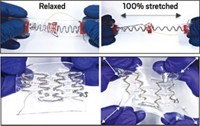Advertisement
Grab your lab coat. Let's get started
Welcome!
Welcome!
Create an account below to get 6 C&EN articles per month, receive newsletters and more - all free.
It seems this is your first time logging in online. Please enter the following information to continue.
As an ACS member you automatically get access to this site. All we need is few more details to create your reading experience.
Not you? Sign in with a different account.
Not you? Sign in with a different account.
ERROR 1
ERROR 1
ERROR 2
ERROR 2
ERROR 2
ERROR 2
ERROR 2
Password and Confirm password must match.
If you have an ACS member number, please enter it here so we can link this account to your membership. (optional)
ERROR 2
ACS values your privacy. By submitting your information, you are gaining access to C&EN and subscribing to our weekly newsletter. We use the information you provide to make your reading experience better, and we will never sell your data to third party members.
Materials
Lighter, Flexible Stretchy Electronics
Materials processing advances pave way to wearable sensors and implanted circuitry
by Mitch Jacoby
December 23, 2013
| A version of this story appeared in
Volume 91, Issue 51

COVER STORY
Materials Science: Lighter, Flexible Stretchy Electronics
The prospect of making “smart” wearable electronic devices, including ones integrated into clothing and others worn by people directly on their skin, drove scientists in 2013 to develop thinner, lighter, and ever more flexible and stretchable circuitry. Researchers aim to capitalize on these technology advances by making next-generation communication devices and nearly imperceptible medical sensors and monitors. The advances also underpin development of longer-lasting and less obtrusive medical implants. In one example, the University of Tokyo’s Martin Kaltenbrunner and Takao Someya and colleagues demonstrated that large sheets of organic-transistor-based integrated circuitry can be fabricated on polymer foils. The test devices, which set records for their thinness and low weight, withstood repeated bending and crumpling and could be stretched by up to 230% of their original dimensions without losing electrical connectivity (C&EN, July 29, page 28; Nature 2013, DOI: 10.1038/nature12314). In a related study, a team led by Keon Jae Lee of the Korea Advanced Institute of Science & Technology developed a method for quickly separating ultrathin sheets of silicon-based integrated circuits from the traditional rigid substrates on which they are fabricated and encapsulating the sheets in a flexible support—a biocompatible liquid-crystal polymer. The team applied the process to integrated circuits used for radio-frequency wireless communication with implanted medical devices. They report that the circuits withstood 1,000 bending cycles and functioned properly throughout a six-week period in which they were implanted in rats (C&EN Online Latest News, May 7; ACS Nano 2013, DOI:10.1021/nn401246y). These encapsulated devices should last for at least two years inside the human body, the researchers predict.





Join the conversation
Contact the reporter
Submit a Letter to the Editor for publication
Engage with us on Twitter